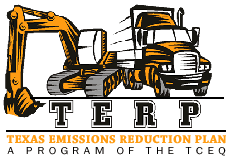
Public Citizen’s Texas office wrote to state lawmakers today urging them to vote in support of HB1.
The letter calls on lawmakers to support funding specifically for the Texas Emissions Reduction Plan, or TERP.
“TERP is the most cost-effective way to reduce nitrogen oxides (NOx) pollution in Texas,” the letter says. “Reducing NOx pollution improves public health and reduces ozone pollution in our federal ozone non-attainment areas of Houston, DFW, and San Antonio. Despite this, the 2018-19 biennial allocation to TERP was down 22.3 percent from 2016-17 spending levels.[1]
Our letter also aims to address some misconceptions about the Light Duty Purchase or Lease Incentive Program.
“We would…like to correct a misperception about the Light Duty Purchase or Lease Incentive Program (LDPLIP), which provides grants for the purchase of passenger electric vehicles,” we wrote. “This program has been characterized as providing funds for “rich environmentalists to buy electric vehicles.” While we would love to meet some of these rich environmentalists, we aren’t aware of too many of them, and we note that the two most popular vehicles in the LDPLIP program are the Nissan Leaf, with a 2018 MSRP of $29,990 and the Chevy Volt, with a 2018 MSRP of $33,220.[4]”
Read Public Citizen Texas Office Director Adrian Shelley’s complete letter to lawmakers below.
Via hand delivery.
March 18, 2019
Re: HB 1, general appropriations bill Public Citizen testimony in support of the Texas Emissions Reduction Plan
Dear Chairman Zerwas and members of the committee:
Public Citizen appreciates the opportunity to testify on HB 1 and in support of funding for the Texas Emissions Reduction Plan (TERP). The proposed budget funds TERP at just over $154 million for the 2020-21 biennium. We ask you to allocate $400 – 500 million to TERP for the 2020-21 biennium, equivalent to the fee revenue that will be collected if all TERP fees are extended. We also note that the TERP account has in excess of $1.7 billion in it right now. This money was paid by vehicle owners and drivers in Texas and is dedicated to the purpose of reducing air pollution.
TERP is the most cost-effective way to reduce nitrogen oxides (NOx) pollution in Texas. Reducing NOx pollution improves public health and reduces ozone pollution in our federal ozone nonattainment areas of Houston, DFW, and San Antonio. Despite this, the 2018-19 biennial allocation to TERP was down 22.3 percent from 2016-17 spending levels.[1]
Perhaps the most cost effective program in TERP is the Diesel Emissions Reduction Incentive (DERI) Program, from 2001 through August 31, 2018, DERI has made possible:
- 11,899 projects
- $1.1 billion in grants
- 179,878.45 tons of NOx reduction
- At a cost per ton of $6,128.[2]
Within the DERI program, the Emissions Reduction Incentive Grants (ERIG) program funds replacements and retrofits of heavy-duty on-road vehicles, non-road equipment, marine vessels, locomotives, and certain stationary engines. According to the TCEQ:
The most recent ERIG application period closed in August 2018, with approximately $53 million in available funds. More than $100 million in grants were requested by applicants.[3]
This means that nearly $50 million in grant opportunities were left on the table. If this funding had been allocated and appropriated for projects that met the historical DERI cost effectiveness rate of $6,128 per ton of NOx, an additional eight thousand tons of nitrogen oxides could have been removed from our air.
We would also like to correct a misperception about the Light Duty Purchase or Lease Incentive Program (LDPLIP), which provides grants for the purchase of passenger electric vehicles. This program has been characterized as providing funds for “rich environmentalists to buy electric vehicles.” While we would love to meet some of these rich environmentalists, we aren’t aware of too many of them, and we note that the two most popular vehicles in the LDPLIP program are the Nissan Leaf, with a 2018 MSRP of $29,990 and the Chevy Volt, with a 2018 MSRP of $33,220.[4] We also note that the reduced fuel cost and lifetime operation and maintenance cost of these and other electric vehicles make them far cheaper to own than comparably priced internal combustion engine vehicles.
Because TERP is the most cost effective means to reduce air pollution, which will provide public health benefits and help Texas meet federal air quality standards, we support an allocation of $400-500 million in the 2020-21 biennium.
Thank you for the opportunity to provide this testimony, if you wish to discuss our position further, I can be reached by email at ashelley@citizen.org or by phone at 512-477-1155.
Respectfully,
Adrian Shelley, Texas Office Director
Public Citizen
[1] See Legislative Budget Board, “Overview of the Texas Emissions Reduction Plan (TERP) Account” (May 2018) available at https://www.lbb.state.tx.us/Documents/Publications/Presentation/5266_HAC_TERP.pdf.
[2] See Texas Commission on Environmental Quality, Air Quality Division, “Texas Emissions Reduction Plan Biennial Report (201-2018): Report of the 86th Texas Legislature” (Dec. 2018) available at https://www.tceq.texas.gov/assets/public/comm_exec/pubs/sfr/079-18.pdf. See also attached.
[3] See Id. at p. 7 (emphasis added).
[4] See Id. at p. 49.


